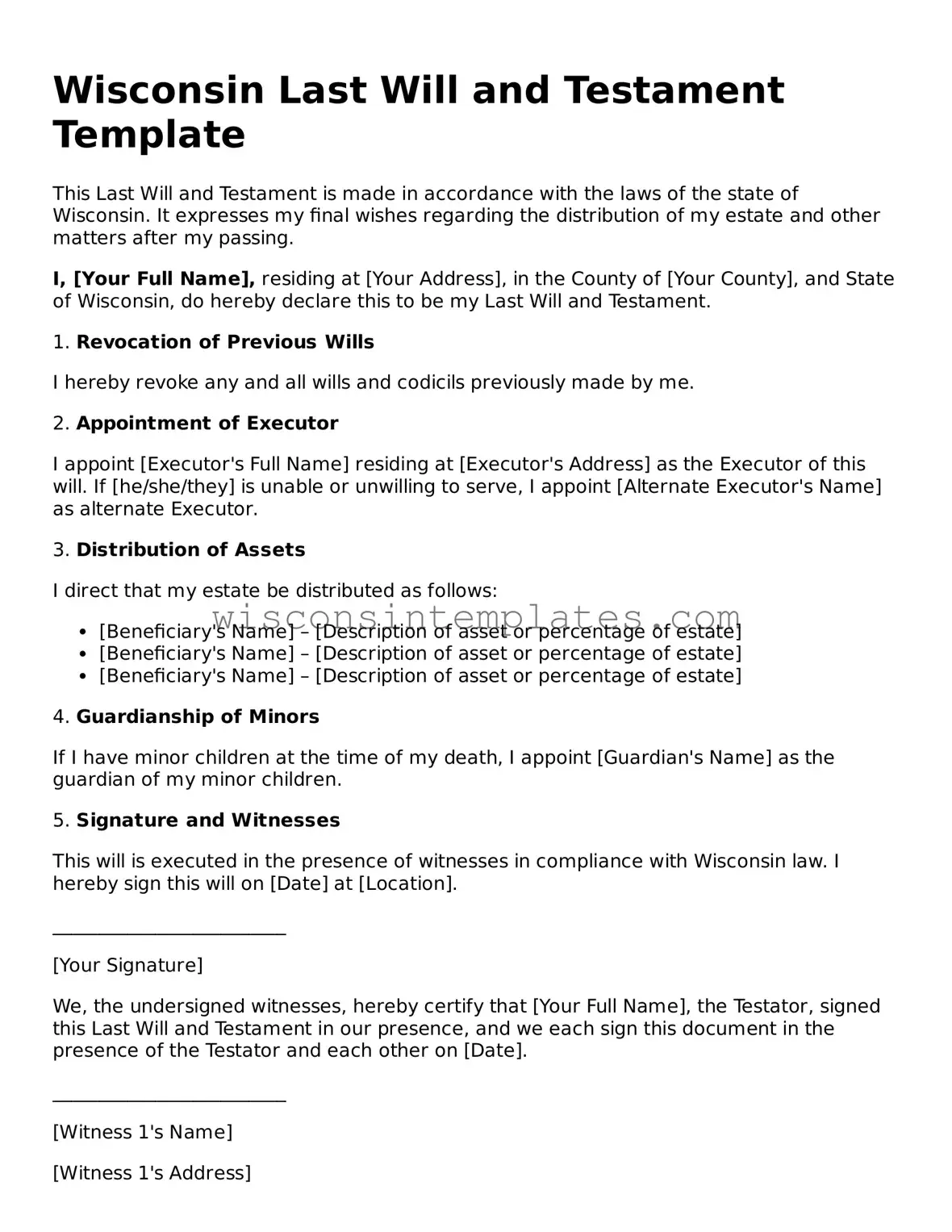Legal Last Will and Testament Form for Wisconsin State
A Wisconsin Last Will and Testament form is a legal document that allows individuals to outline their wishes regarding the distribution of their assets after death. This form serves as a critical tool for ensuring that a person's estate is managed according to their preferences. Understanding how to properly complete and execute this form is essential for anyone looking to secure their legacy in Wisconsin.
Launch Editor Now
